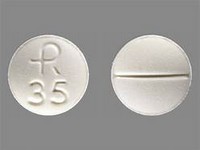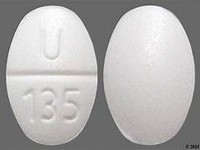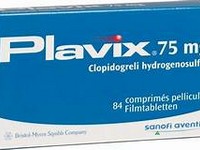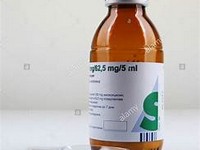Dexibuprofen

Dexibuprofen
CLINICAL USE
NSAID and analgesicDOSE IN NORMAL RENAL FUNCTION
Initially: 600–900 mg daily in divided doses, after food; Maximum 1.2 g daily (900 mg daily for dysmenorrhoea);Maximum single dose: 400 mg (300 mg for dysmenorrhoea)PHARMACOKINETICS
DOSE IN RENAL IMPAIRMENT
GFR (mL/MIN)
DOSE IN PATIENTS UNDERGOING RENAL REPLACEMENT THERAPIES
IMPORTANT DRUG INTERACTIONS
Potentially hazardous interactions with other drugsACE inhibitors and angiotensin-II antagonists: antagonism of hypotensive effect, increased risk of nephrotoxicity and hyperkalaemiaAnalgesics: avoid concomitant use of 2 or more NSAIDs, including aspirin (increased side effects); avoid with ketorolac (increased risk of side effects and haemorrhage)Antibacterials: possibly increased risk of convulsions with quinolonesAnticoagulants: effects of coumarins enhanced; possibly increased risk of bleeding with heparins and coumarinsAntidepressants: increased risk of bleeding with SSRIs and venlafaxineAntidiabetic agents: effects of sulphonylureas enhancedAnti-epileptics: possibly increased phenytoin concentrationAntivirals: increased risk of haematological toxicity with zidovudine; concentration possibly increased by ritonavirCiclosporin: may potentiate nephrotoxicity Cytotoxic agents: reduced excretion of methotrexate; increased risk of bleeding with erlotinibDiuretics: increased risk of nephrotoxicity; antagonism of diuretic effect; hyperkalaemia with potassium-sparing diureticsLithium: excretion decreased Pentoxifylline: increased risk of bleeding Tacrolimus: increased risk of nephrotoxicityADMINISTRATION
Reconstition
–Route
OralRate of Administration
–Comments
–OTHER INFORMATION
S (+)– enantiomer of racemic ibuprofen Inhibition of renal prostaglandin synthesis by NSAIDs may interfere with renal function, especially in the presence of existing renal disease – avoid if possible; if not, check serum creatinine 48–72 hours after starting NSAID – if raised, discontinue NSAID therapy. Use normal doses in patients with CKD 5 on dialysisUse with caution in renal transplant recipients – can reduce intrarenal autocoid synthesis.
See how to identify renal failure stages according to GFR calculation
See how to diagnose irreversible renal disease
Home








